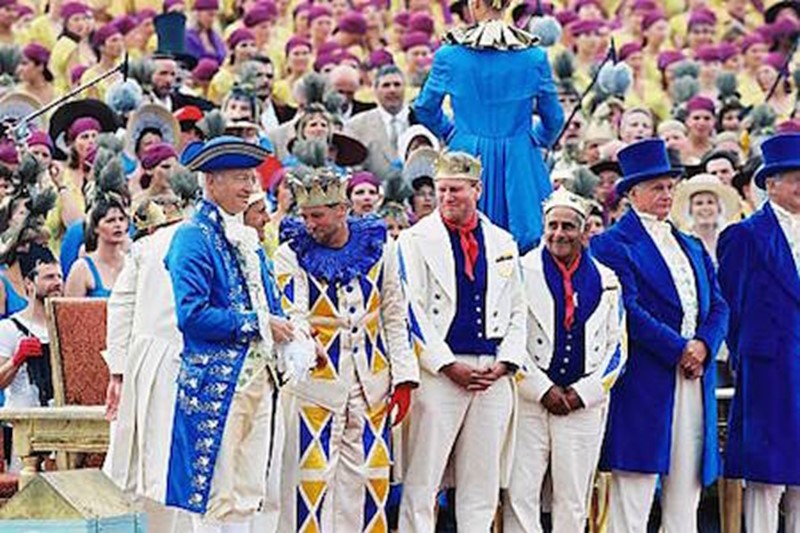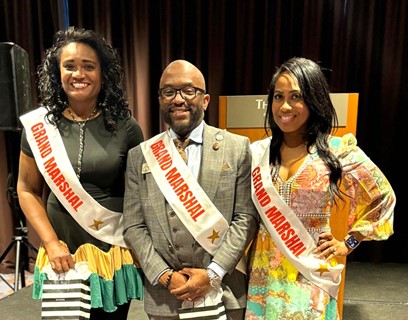
Addis Ababa (Ethiopia), 1 December— This afternoon 12 elements have been added to the Representative List of the Intangible Cultural Heritage, following the decisions adopted by the Intergovernmental Committee for the Safeguarding of the Intangible Cultural Heritage, taking place until 2 December in Ethiopia.
The Representative List includes forms of expression that testify to the diversity of intangible heritage and raises awareness of its importance. The Committee has concluded its examination of nominations to the Representative List, which now includes a total of 366 items.
The following elements were inscribed during today’s afternoon session (in order of inscription):
Mauritius—Bhojpuri folk songs in Mauritius, Geet-Gawai
Geet-Gawai is a traditional, pre-wedding ceremony combining rituals, prayer, songs, music and dance performed mainly by Bhojpuri-speaking communities in Mauritius. Taking place at the bride or groom’s home, it involves family members and neighbors. Married women sort items like rice and money in a piece of cloth while others sing songs to honor Hindu gods and goddesses. Next, everyone dances to uplifting songs. An expression of community identity and collective memory, it is passed on within families, by community centers and academies.
Mexico—Charrería, equestrian tradition in Mexico
Charrería is a traditional practice of livestock herding communities in Mexico that began in the XVI century. Initially used to help herders from different estates better coexist, these days purpose-built associations and schools assist in perpetuating the tradition, also considered a sport, by training community members to a competition level standard. Different categories of charrería are performed by male and female practitioners in front of an audience. It is considered an important aspect of community identity and way of transferring social values to younger generations.
Nigeria—Argungu international fishing and cultural festival
Every year in the north-west of Nigeria, communities participate in the Argungu International Fishing and Cultural Festival. The four day festival between February and March, features kabanci – water competitions including hand fishing, canoe racing, wild duck catching – and other traditional practices. Men and boys participate, while women perform songs and dances. Considered a contributor to identity and means of maintaining peace between the Argungu and neighbouring Sokoto, knowledge on the tradition is passed on within chieftaincies involved, families and via apprenticeships.
Venezuela (Bolivarian Republic of)— Carnival of El Callao, a festive representation of a memory and cultural identity
The Carnival of El Callao, practiced in communities of Venezuela, is associated with emancipation celebrations in the French-speaking islands of the Caribbean. Running from January to March, it features parades of people dressed as characters from history and fantasy, music, dancing and concerts throughout town streets with up to 3,000 people participating. The carnival highlights Callaoense history, reinforces its cultural identity, promotes unity and encourages younger generations to discover their heritage. This element is passed on mainly within families and schools run by bearers.
Switzerland—Winegrowers' Festival in Vevey
The Winegrowers’ Festival is part of the living heritage of Vevey in Switzerland that recognizes the community’s winegrowers. Originally a pageant, it now features 15 events over three weeks and 5,000 contributors. Based on a traditional theme with prizes for the best winegrowers, as well as music, food and processions to neighboring La Tour-de-Peilz, the festival is run by the Vevey Brotherhood of Winegrowers with the help of additional volunteers. It encourages community spirit, artistic life and facilitates winegrower knowledge.
Viet Nam—Practices related to the Vi·ªát beliefs in the Mother Goddesses of Three Realms
To meet spiritual needs, everyday wishes and gain help in achieving good health and success communities in Viet Nam worship the Mother Goddesses of Three Realms: heaven, water, and mountains and forests. This includes the Mother of the World Li·ªÖu H·∫°nh and other heroic spirits. The tradition involves daily worship, ceremonies, rituals and festivals. Passed on by bearers, such as temple priests, the activities provide a basis for social relations connecting the community and maintaining an aspect of its cultural heritage.
Romania; Republic of Moldova --Traditional wall-carpet craftsmanship in Romania and the Republic of Moldova
Traditionally, wall carpets produced by weaver communities of Romania and the Republic of Moldova were used for decoration, funerals, exhibitions and as part of a bride’s dowry. These days, they are mainly appreciated as works of art. Techniques have changed from vertical/horizontal looms practiced in some parts to tight picking and other forms, with weavers now able to work from home. An expression of creativity, identity and tool for social cohesion, it is passed on within families and by craft centers and colleges.
Slovakia; Czechia—Puppetry in Slovakia and Czechia
Puppet theater for communities in Slovakia and Czechia is a popular form of traditional folk entertainment, but also a way of conveying a vision of the world and teaching moral values. An integral part of local theatre and literary tradition, it contributes to socialization, creativity and participant identity. Featuring puppets mostly made of wood and animated using various methods, the traditional cultural practice is passed on by performer communities, puppetry dynasties, not-for-profit organizations and music and arts schools.
Slovenia—Škofja Loka passion play
In Škofja Loka, Slovenia, a folk play procession takes place in the town’s medieval center during Lent and Easter. The Škofja Loka Passion Play, based on the ancient works of a Capuchin monk, demonstrates 20 scenes of the stations of the cross and others from the Old Testament and New Testament, involving 900 local performers and 400 additional volunteers. Performed every six years, it is considered a contributor to community identity and cohesion, passed on within families and by schools and local craftspeople.
Tajikistan—Oshi Palav, a traditional meal and its social and cultural contexts in Tajikistan
Oshi palav (pilaf) is a traditional dish of communities in Tajikistan recognized as a part of their cultural heritage. The ‘King of Meals’ is based on a recipe using vegetables, rice, meat and spices but up to 200 varieties exist. Considered an inclusive practice that brings people of different backgrounds together, it is prepared to be enjoyed at regular mealtimes, as well as social gatherings, celebrations and rituals. Skills associated with the practice are passed on within families and cooking schools.
Turkey—Traditional craftsmanship of Çini-making
Çini are traditional, handmade glazed tiles and ceramics made in Turkey with colourful motifs found on building facades and in homes. The designs, representing local customs and beliefs, are drilled on paper, transferred to the surface with contours hand drawn, then the work dyed, glazed and fired. Practiced formally and informally in traditional workshops, public education centres, universities and in the home, çini making is considered an outlet for self-expression, development, healing and a symbolic aspect of Turkey’s cultural identity.
Uzbekistan—Palov culture and tradition
There is a saying in Uzbekistan that guests can only leave the host’s house after palov has been offered. Prepared with rice, meat, spices and vegetables, the traditional dish is also enjoyed as a regular meal, to celebrate special occasions, help those in need or honor loved ones who have passed. Passed on from master to apprentice, within families, peer groups and community-based institutions, the practice acts to strengthen social ties, promote solidarity and is part of the community’s cultural identity.


